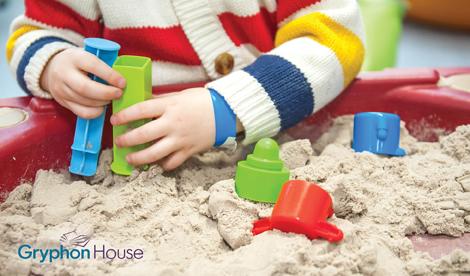5 Creative Sand- and Water-Table Activity Ideas
August 21st, 2017 | 3 min. read

Creative play and sensory integration are crucial to the development of well-rounded children. Teachers and parents can make small changes to their classroom or home environments to provide young children the opportunity to observe and explore the environment around them.
Creative play and sensory integration are crucial to the development of well-rounded children. Teachers and parents can make small changes to their classroom or home environments to provide young children the opportunity to observe and explore the environment around them.
Sand and Water Play explains how sand and water tables benefit childhood development, providing specific activities teachers and caregivers can easily try. They help children develop their motor skills, enhance their social emotional growth, and can even build their confidence. Sand and water tables also provide children with positive social interactions, helping them build connections with their peers and develop valuable skills through play. For example, encouraging letter writing in the sand may help children feel more comfortable attempting a literacy activity. Or, a child may be motivated to increase and use her verbal skills with her peers in this setting.
Try these five creative sand and water table activity ideas at home or in the classroom today!
Sand Castles, Canals, and Tunnels
Objectives
- Children will develop problem-solving skills as they create tunnels and canals for their sand castles.
- Children will build confidence and feel proud of their work as they create a sand castle.
- Children will show respect for their peers’ work.
- Children will develop eye-hand coordination.
Materials
- Sand
- Water
- Sand molds
- Small shovels
- Buckets
Setting Up the Activity
- Bring the sand and water table outside.
- Fill it with sand, water, and other materials and encourage the children to create sand castles.
Legos and Water
Objectives
- Children will approach a project with expectations of success.
- Children will work through a project and complete a task.
- Children will share and build on each other’s ideas.
- Children will increase their small motor skills.
Materials
- Water
- Food coloring, optional
- Legos
Setting Up the Activity
- Put 5” (12 cm) of water in the sand and water table. Color the water, if desired.
- Place Legos in the water. If desired, use Flexi-blocks or Duplos for variety.
Tips
- Water is an attractive medium in which to play with Legos. This activity encourages creativity and success because it is open-ended. Do not direct the children to build a boat.
Digging for Dinos
Objectives
- Children will learn correct dinosaur names.
- Children will read books that provide factual information about dinosaurs.
- Children will channel their aggressive behavior from fighting to nurturing by having dinosaur families that care for each other.
- Children will take turns playing with different dinosaurs.
- Children will identify different kinds of family units.
Materials
- Colored aquarium rocks
- Plastic tablecloth, optional
- Large and small plastic dinosaurs
- Plastic eggs
- Plastic plants
- Cardboard packing corners (for dinosaur homes)
- Containers of water, optional
Setting Up The Activity
- Place colored aquarium rocks in the bottom of the sand and water table. If desired, line the sand and water tale with a plastic tablecloth that has scenery on it before placing the aquarium rocks in it.
- Put the other materials in the sand and water table and encourage the children to play.
- Add containers of water to make lakes, rivers, and oceans, if desired.
Tips
- Remember how important it is to let children play with equipment as long as their interest in playing continues. Often teachers force children to give up equipment before they are ready. Children are creatively stifled, unable to work through situations, or complete their play when this occurs.
Air Moves Things
Objectives
- Children will learn that air is real and can move things.
- Children will learn about cause and effect.
- Children will try a new and different activity.
Materials
- Light objects such as Ping-Pong balls, feathers, pieces of tissue paper, leaves, Styrofoam packing, rocks, and cotton balls
- Straws
- Masking tape
- Marker
Setting Up The Activity
- Place the objects in the sand and water table.
- Give each child her own straw. Use the masking tape and a marker to label each child’s straw. Make sure the children do not share straws. This will keep the activity sanitary and prevent the spread of germs from one child to another.
- Encourage the children to experiment blowing different objects using their straws.
Float and Sink
Objectives
- Children will make guesses about possible outcomes, try out different solutions, and observe results.
- Children will verbalize their thoughts as the teacher records them.
- Children will work together towards a common goal.
Materials
- Objects that will sink and float, such as paper clips, little pieces of wood, nuts and bolts, Styrofoam, and so on
Setting Up The Activity
- Fill the sand and water table ¾ full of water.
- Encourage the children to experiment with the different objects to see if they will sink or float.
Topics: